Abstract
[1′-14C, 13C6]Indole-3-acetic acid was infiltrated into immature pericarp discs from fruits of tomato (Lycopersicon esculentum Mill., cv Moneymaker). After a 24-h incubation period the discs were extracted with methanol and the partially purified extract was analyzed by reversed-phase high-performance liquid chromatography-radiocounting. Five metabolite peaks (1-5) were detected and subsequently analyzed by combined high-performance liquid chromatography-frit-fast atom bombardment-mass spectrometry. The metabolite 4 fraction was found to contain [13C6]-indole-3-acetylaspartic acid, and analysis of metabolite 5 identified [13C6]indole-3-acetyl-β-d-glucose. The other metabolites could not be identified, but alkaline hydrolysis studies and gel permeation chromatography indicated that metabolites 1 and 3 were both amide conjugates with a molecular weight of approximately 600. Studies with radiolabeled indole-3-acetic acid, indole-3-acetylaspartic acid, and indole-3-acetyl-β-d-glucose demonstrated that in immature pericarp indole-3-acetic acid is deactivated primarily via metabolism to indole-3-acetylaspartic acid, which is further converted to metabolites 1, 2, and 3. In mature, pink pericarp discs, indole-3-acetic acid is converted more extensively to its glucosyl conjugate. Conjugation of indole-3-acetic acid to indole-3-acetylaspartic acid appears to be dependent upon protein synthesis because it is inhibited by cycloheximide. In contrast, cycloheximide has little effect on the further conversion of indole-3-acetylaspartic acid to metabolites 1, 2, and 3.
Full text
PDF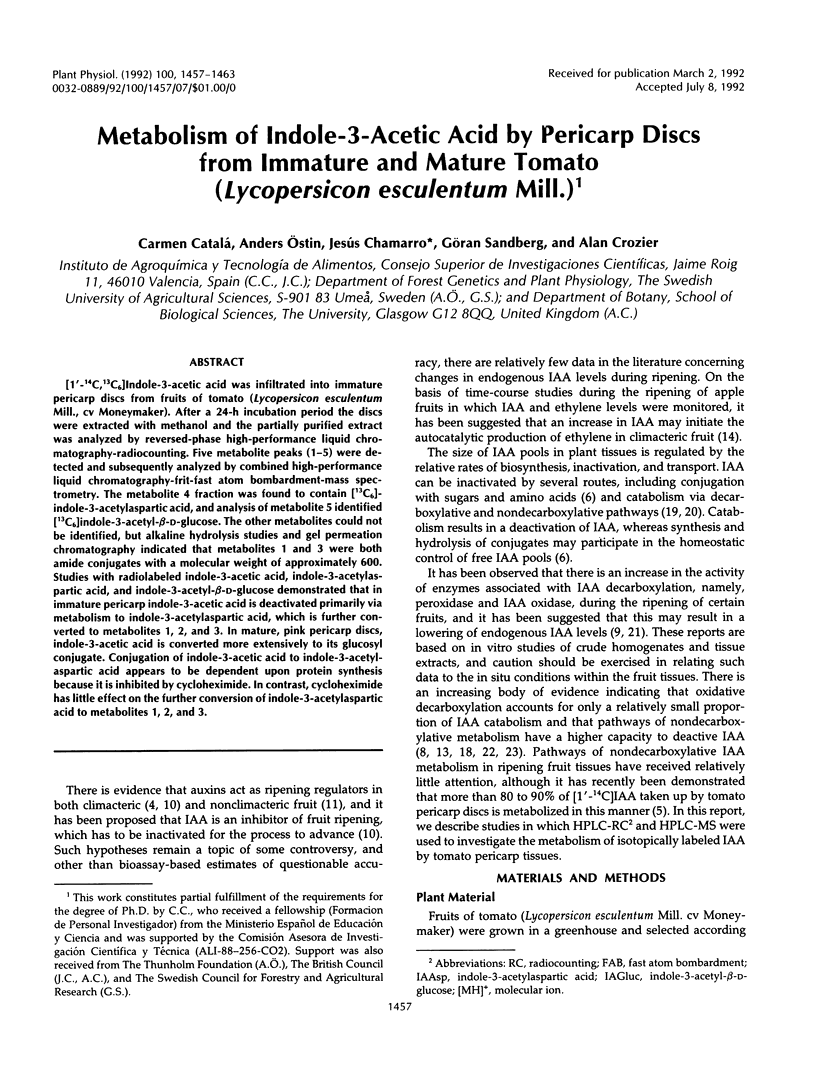
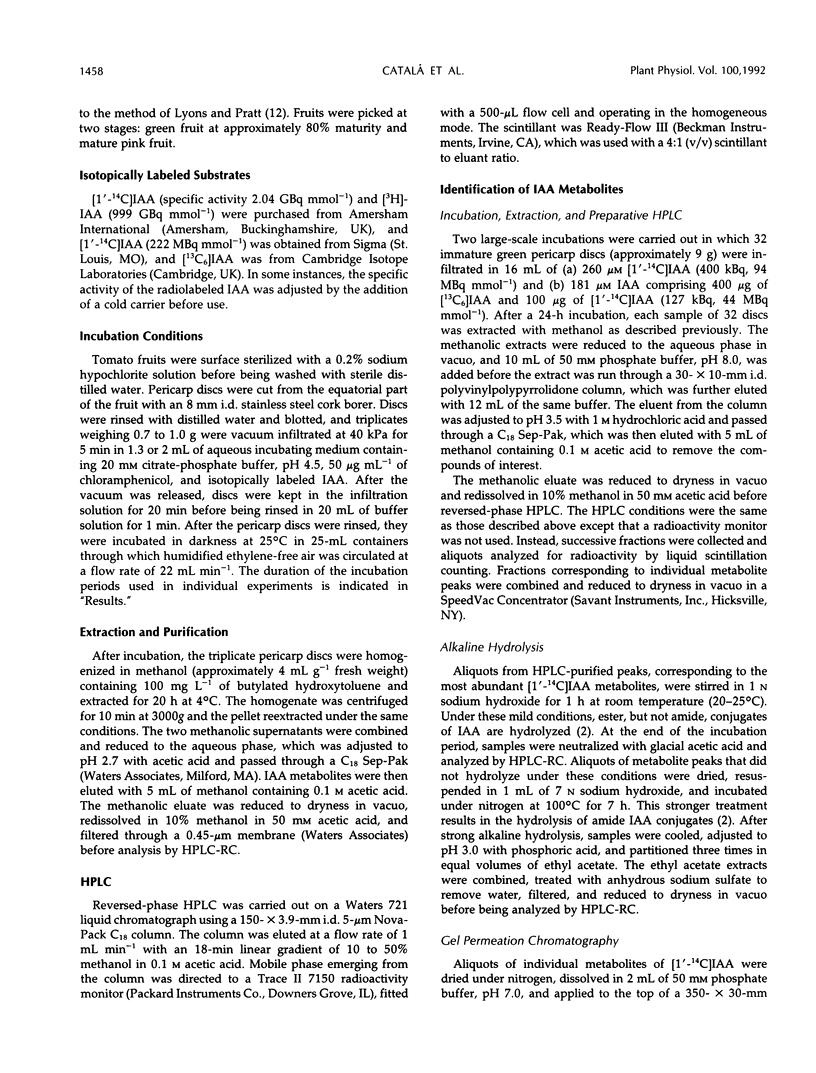
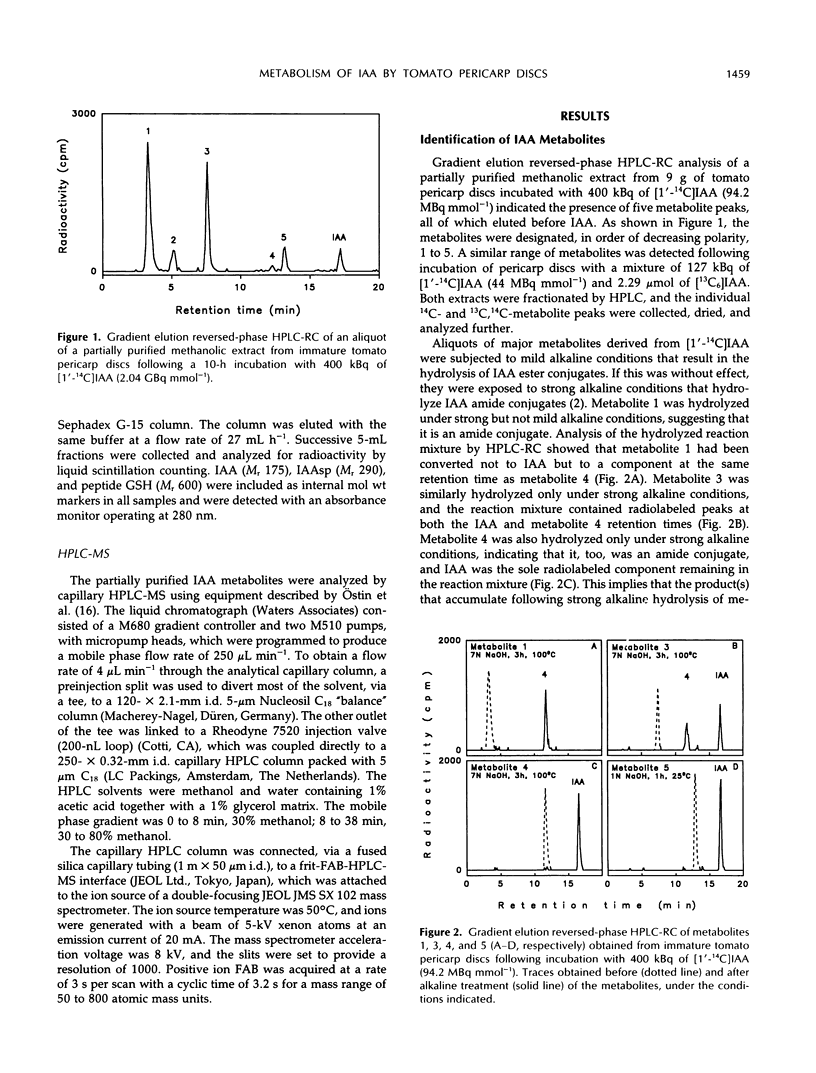
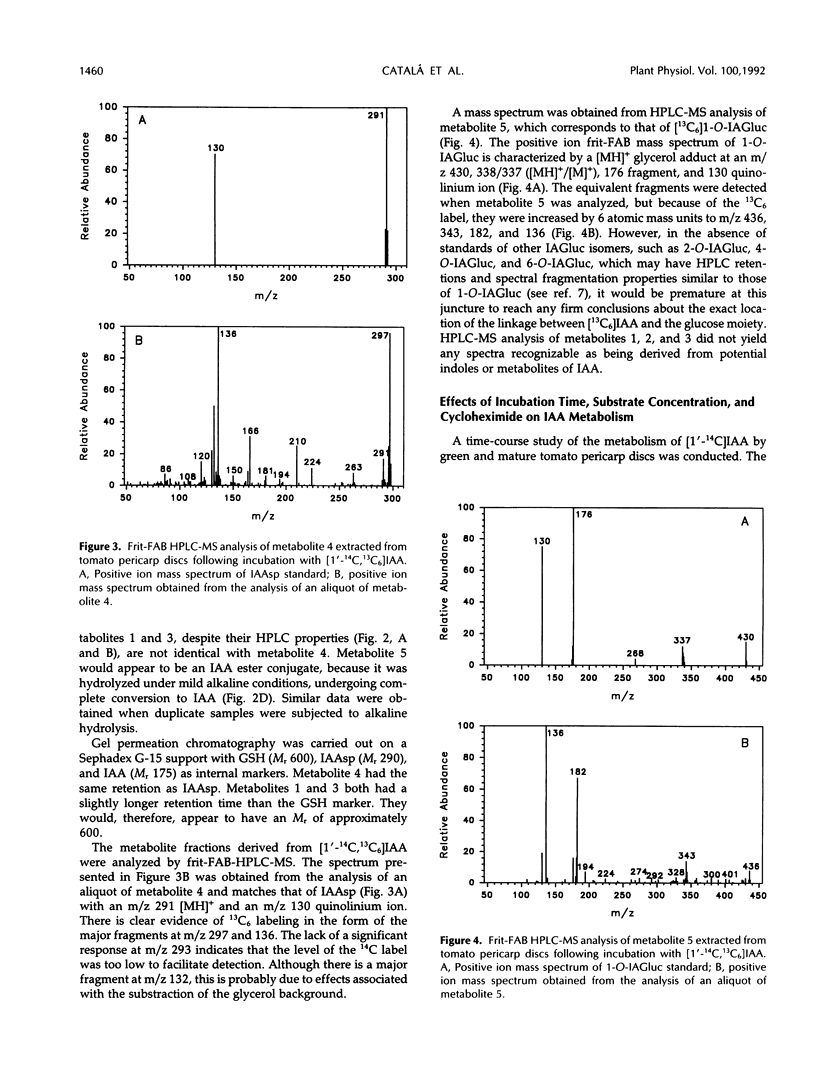
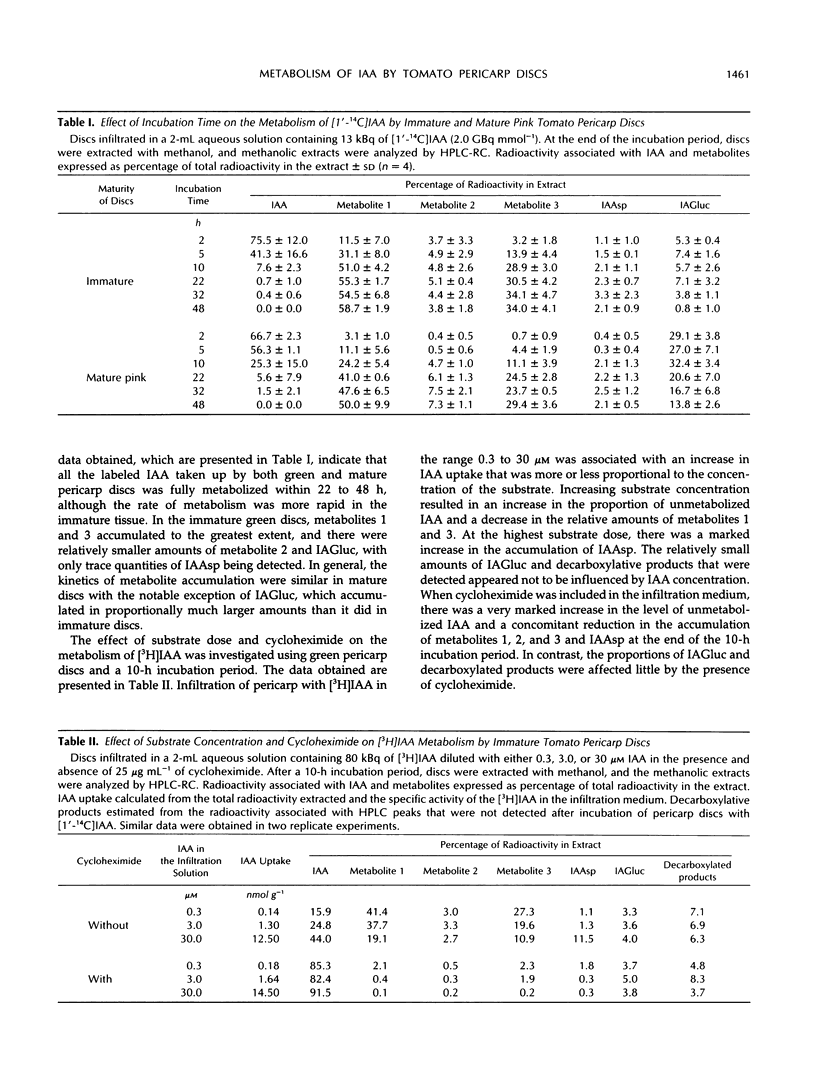
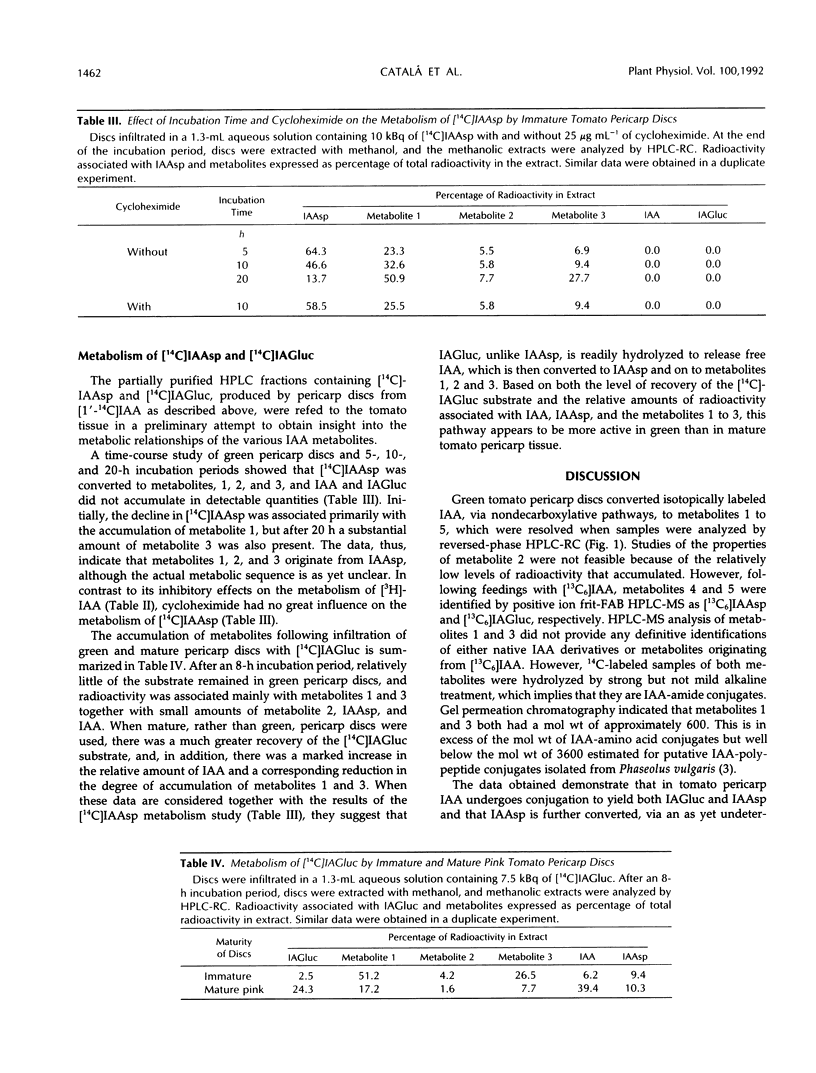
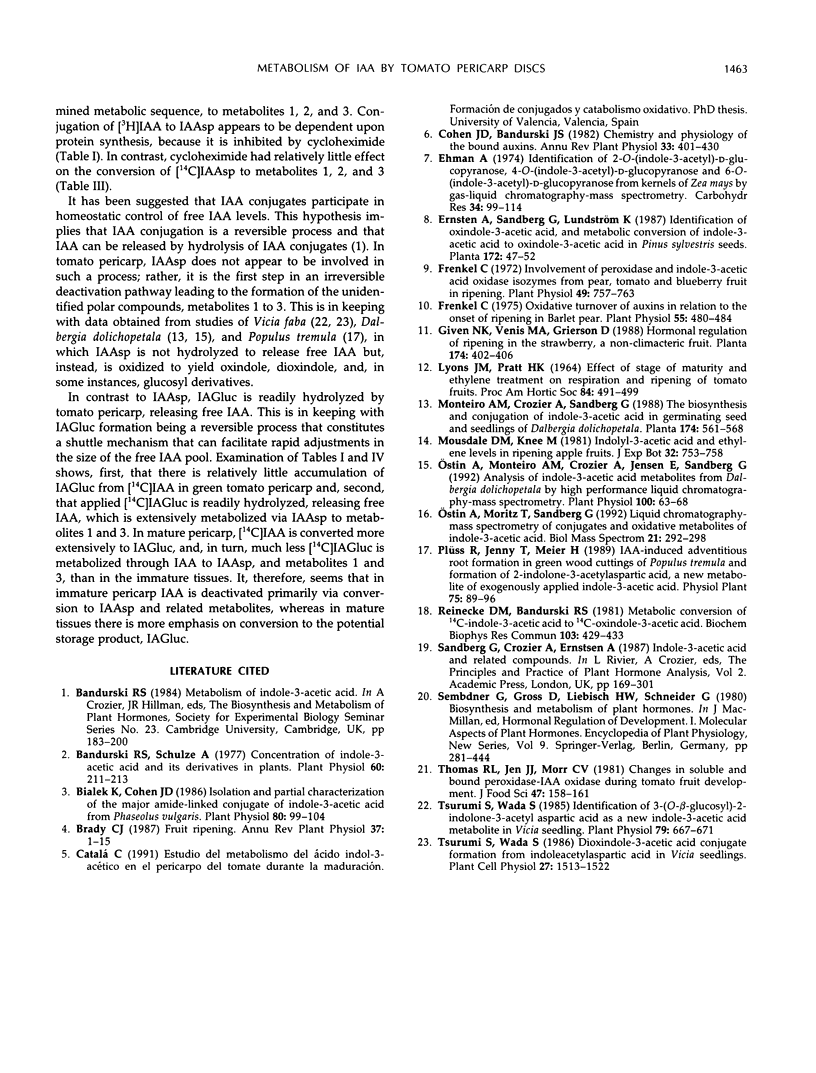
Selected References
These references are in PubMed. This may not be the complete list of references from this article.
- Bandurski R. S., Schulze A. Concentration of Indole-3-acetic Acid and Its Derivatives in Plants. Plant Physiol. 1977 Aug;60(2):211–213. doi: 10.1104/pp.60.2.211. [DOI] [PMC free article] [PubMed] [Google Scholar]
- Bialek K., Cohen J. D. Isolation and Partial Characterization of the Major Amide-Linked Conjugate of Indole-3-Acetic Acid from Phaseolus vulgaris L. Plant Physiol. 1986 Jan;80(1):99–104. doi: 10.1104/pp.80.1.99. [DOI] [PMC free article] [PubMed] [Google Scholar]
- Ehmann A. Identification of 2-O (indole-3-acetyl)-D-glucopyranose, 4-O-(indole-3-acetyl)-D-glucopyranose and 6-O-(indole-3-acetyl)-D-glucopyranose from kernels of Zea mays by gas-liquid chromatography-mass spectrometry. Carbohydr Res. 1974 May;34(1):99–114. doi: 10.1016/s0008-6215(00)80374-2. [DOI] [PubMed] [Google Scholar]
- Frenkel C. Involvement of Peroxidase and Indole-3-acetic Acid Oxidase Isozymes from Pear, Tomato, and Blueberry Fruit in Ripening. Plant Physiol. 1972 May;49(5):757–763. doi: 10.1104/pp.49.5.757. [DOI] [PMC free article] [PubMed] [Google Scholar]
- Frenkel C. Oxidative turnover of auxins in relation to the onset of ripening in bartlett pear. Plant Physiol. 1975 Mar;55(3):480–484. doi: 10.1104/pp.55.3.480. [DOI] [PMC free article] [PubMed] [Google Scholar]
- Ostin A., Monteiro A. M., Crozier A., Jensen E., Sandberg G. Analysis of Indole-3-Acetic Acid Metabolites from Dalbergia dolichopetala by High Performance Liquid Chromatography-Mass Spectrometry. Plant Physiol. 1992 Sep;100(1):63–68. doi: 10.1104/pp.100.1.63. [DOI] [PMC free article] [PubMed] [Google Scholar]
- Reinecke D. M., Bandurski R. S. Metabolic conversion of 14C-indole-3-acetic acid to 14C-oxindole-3-acetic acid. Biochem Biophys Res Commun. 1981 Nov 30;103(2):429–433. doi: 10.1016/0006-291x(81)90470-8. [DOI] [PubMed] [Google Scholar]
- Tsurumi S., Wada S. Identification of 3-(O-beta-Glucosyl)-2-Indolone-3-Acetylaspartic Acid as a New Indole-3-Acetic Acid Metabolite in Vicia Seedlings. Plant Physiol. 1985 Nov;79(3):667–671. doi: 10.1104/pp.79.3.667. [DOI] [PMC free article] [PubMed] [Google Scholar]


